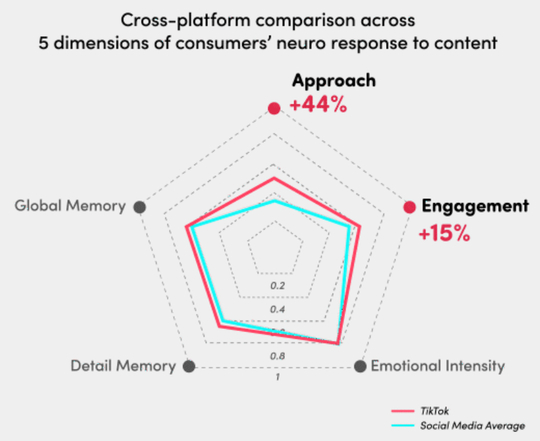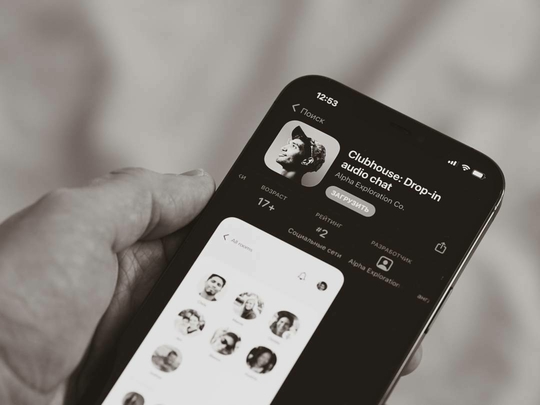
The State Of Data-Driven Marketing In 2023
In this article, we will take a look at the state of data-driven marketing in 2023 and how it is transforming the marketing landscape.
Read MoreAt [B]RIGHT, we illuminate data-informed digital solutions to help your brand succeed in an increasingly complex marketing landscape. Which means we help brands grow based on data, research, and a hefty dose of proven processes, tactics, and channel-specific strategies.
We take the guesswork out of your marketing strategy.
The Stories You Have to Read:

This month, Adweek polled 2,200 American adults regarding the responsibility of recycling. They found that nearly 6 in 10 respondents to the survey believe that companies should be financially or legally penalized if their products are not recyclable or cause negative environmental impacts. 77% of respondents said that consumer packaged goods (CPG) companies hold the most responsibility for ensuring that products and packaging are recyclable. However, consumers do see the responsibility of recycling to be one that is shared between individual citizens (72%), state governments (68%), the federal government (67%), school systems (66%), news media (49%), and law enforcement (48%), among others.
Recycling may not be top of mind for marketers, but it is an evolving consumer preference that can affect product appeal with environmentally conscious consumers in the long term.
The success of Google CPC keywords depends on not just the words themselves, but also the meanings behind them. Phrases help to succinctly define the search intent, which makes your ads more contextual to users. Historically, keywords have been categorized as broad match, modified broad match, phrase match, exact match, or negative match. However, since February 2021, phrase match has absorbed the functionality of modified broad match keywords.
So how exactly does the new phrase match work? Phrase match stands between exact match and broad, so phrase match now offers a balance between precision and increased volume. The meaning of the keyword remains part of the phrase query, and Google determines the broader context to which it applies. As Google algorithms become smarter with each passing day, Google can associate several permutations and combinations of keyword matches with the users’ search queries to serve them with more reasonable results. Marketers can use Google Ads reports to consider and monitor for close variants of the phrase match keyword that can be used to improve targeting.
When the team at [B]RIGHT runs SEM campaigns for our clients, it’s important that we have a firm grasp on the variability of the different keyword match types, synonyms, and similar meanings for phrases. Starting with a clear-cut strategy and well-defined objective helps tailor your keyword choices and match types. We often maximize our ad budgets by opting to use exact match and phrase match keywords. Some instances and objectives warrant the use of broad match, but it should be used sparingly and paired with negative keywords to minimize ad waste.
TikTok published a report on July 19 revealing that TikTok ads are more memorable and more likely to drive purchase responses, than ads on other social platforms and TV. The neurological research study was conducted by Neuro-Insight, a neuromarketing and neuroanalytics company based in New York. They measured brain responses from 57 in-lab respondents aged 18 to 35 during a 24-minute TikTok browsing session where they were exposed to 26 ads.
TikTok stood out from other platforms on two key dimensions that the study calls Approach and Engagement. The Approach vector is in relation to “emotional valence,” or the likeability of what was being seen in an ad and how that relates to in-the-moment action. The second vector, Engagement, shows personal relevance of the content, correlation to memory, and the likelihood that someone may act on the information in the future. TikTok’s engagement was 15% stronger than other leading platforms.
TikTok is a platform that [B]RIGHT has watched rise to large-scale adaptation over the last couple of years. The social platform is a natural fit for some brands and products—assuming they’re able to create engaging content—considering the content style, user demographics, and platform culture. Although the platform might not be suitable for all brands, it is promising to see the neuroanalytics validating TikTok as a conversionary possibility for e-commerce brands.

The nomination of Jonathan Kanter to DOJ's Antitrust Division is another indicator of the Biden administration’s stance against alleged US monopolies.
Jonathan Kanter was nominated by President Joe Biden for the Chief of the Justice Department’s antitrust division this month, following the signing of sweeping executive orders to promote competition across industries. The executive orders include the lifting of non-compete agreements between workers and employers and allowing prescription drug imports from Canada.
Kanter is a long-time opponent of Google and its parent company Alphabet Inc. He is an expert antitrust lawyer who started a private practice, leaving one of the country’s biggest law firms to continue representing companies that have pushed antitrust enforcers to sue the search giant. Kanter is a favorite among lawmakers, and he feels that the US economy is plagued by monopoly powers and that the DOJ and FTC should more aggressively police anticompetitive conduct and company mergers.
This nomination is another indicator of the Biden administration’s stance against alleged US monopolies. In May, President Joe Biden nominated Lina Kahn to the head of the Federal Trade Commission, another notable candidate with strong opposition to Big Tech companies. Stay tuned, as there are likely to be more policies of this kind coming down from the Biden administration in the future.
In an explainer video released earlier this month, Facebook outlines how the News Feed algorithm works and how it determines content to be shown in the feed. Facebook’s goal is to ensure that users see the posts that are most valuable to them at the top of their feed every time they open the app, and since there is so much content published daily, the algorithm helps prioritize which posts are deemed most important to the user.
The algorithm evaluates and ranks content using four key elements:
Inventory encompasses the posts published by pages, groups, and people you actively follow. Signals are the interactions and engagements with content in the past, which indicate if a specific creator’s post or content is of importance to you. Predictions are new content that the algorithm is evaluating for likely relevance, and the fourth element refers to the relevance score assigned to each content piece that determines the order of posts that appear in your feed.
On July 12, TED hosted its first series of rooms on the Clubhouse app as the two companies announced their exclusive content-sharing partnership. This is the first of moves by the Clubhouse app to keep users coming back to the platform and engaging with a pool of thought leaders and experts from the TED roster. The addition could give the burgeoning app the recognition it needs to hold its own as a social platform. But is this effort sustainable?
Downloads of the Clubhouse app have slowed since its initial buzz. Although there was an uptick after the Android app launched in May (much of it in the Brazil and India markets), the odds of sustaining this growth diminished when Twitter and Facebook recently launched audio-centric features in direct competition with the Clubhouse app.

UGC, or user-generated (created) content, is any video, image, text, or audio that users post online or on social media platforms in relation to a brand, a brand’s products, and the user’s experience with them. These user-created content pieces can enhance a brand’s equity by strengthening and improving its online reputation. UGC, and specifically unsolicited UGC, acts as a testimonial to how well a brand is living up to its promises and to the expectations that customers have of the brand.UGC offers many benefits to a brand and should be seriously considered in any content strategy. UGC puts the customer experience front and center—promoting not just products, but the benefit of those products. This enhances the brand’s credibility and serves as excellent social proof. A study by Crowdriff.com found that 47% of millennials and 36% of baby boomers trust UGC, compared to only 25% of them trusting branded content messaging. It is no secret that UGC can stretch your content marketing budget, as visuals, audio, and text can be repurposed from the users’ posts. In short, UGC is capable of building a deeper and more authentic relationship with customers, helping your brand appear approachable and part of the conversation while delivering content that’s genuine and cuts through the clutter and noise of purely promotional content.
YouTube announced the addition of audio ads to their platform in November of 2020. Audio streaming platforms like Spotify and Pandora have had audio ads for a while now, but how do audio ads compare to video ads on YouTube’s platform? That is where Creatopy comes in. They conducted an experiment to test audio placements against the video ad format on YouTube. They spent $6,797 on the experiment and kept as many of the variables fixed as possible—keeping messaging, budget, and audience targeting the same and only changing the format of the ads.
So how did they compare? Audio ads had 68% more impressions than video ads, likely as a result of their CPM being $4.40 compared to the $7.41 CPM of video ads. When comparing click performance, video ads were the clear winners with 778 clicks on the ads compared to 315 on audio ads, a 146% difference. Due to the low click volume on audio ads, their CTR was low, at 0.04%, compared to the 0.17% on video ads. This also translated to a CPC that was $6.42 higher than video.
From [B]RIGHT’s perspective, audio-only ads can be very powerful in the right media strategy, given the right objectives. Based on the results of this experiment, audio-only ads could be great for driving brand awareness in a multi-touchpoint strategy, where you may rely on a different format to drive the consideration and conversion stages of the sales funnel.
Thanks for reading this month's marketing and tech-related news. We found these articles insightful and helpful in navigating the changing marketing landscape and hope they are of value to you too.
Until next time.
Seth Slone | Digital PM

In this article, we will take a look at the state of data-driven marketing in 2023 and how it is transforming the marketing landscape.
Read More
Marketers need to be agile and proactive in their planning, adapting to the changing landscape and staying ahead of the competition.
Read More
The marketing landscape in 2022 saw the continuation of several key trends, including the growing importance of data-driven marketing, the rise of e-commerce and the increasing dominance of digital channels.
Read More